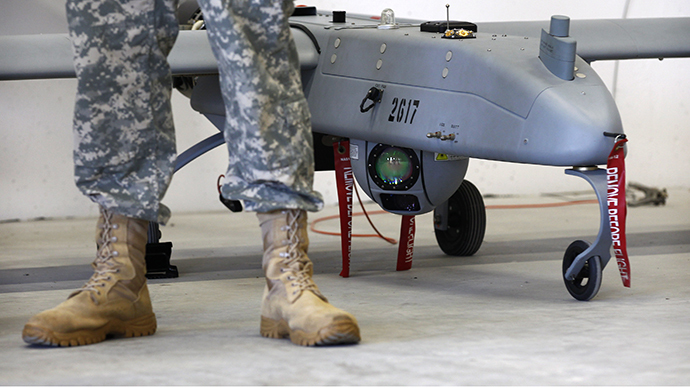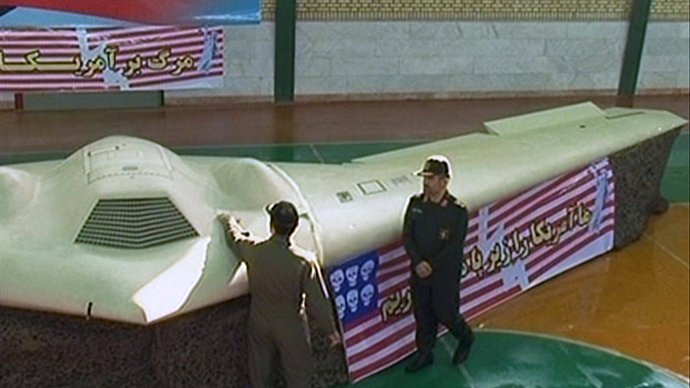All countries will have drone kill technology in 10 years – report

In just one decade, just about every country in the world will have the means to either build or buy unmanned aerial vehicles (UAV) capable of launching missiles at enemy targets, thus dramatically changing the face of warfare.
Despite a track record that is stained with the blood of innocent
victims, drone technology is quickly becoming the weapon of
choice for militaries around the globe, and it’s too late for the
United States – presently the leader in UAV technologies – to
stop the rush, according to Defense One, a site devoted to
security issues.
Just a few countries now hold membership in the elite drone club,
including the US, United Kingdom, Russia, Israel, Iran, Pakistan
and China. Other countries, such as South Africa and India, are
actively seeking to join. According to the RAND organization,
however, another 23 countries “are developing or have
developed” armed drones.
Experts point to China’s prowess in building knockoff drones,
which are expected to flood the market very soon.
“Once countries like China start exporting these, they’re
going to be everywhere really quickly. Within the next 10 years,
every country will have these,” Noel Sharkey, a robotics and
artificial intelligence professor from the University of
Sheffield, UK, told Defense One. “There’s nothing illegal
about these unless you use them to attack other countries.
Anything you can [legally] do with a fighter jet, you can do with
a drone.”
Meanwhile, some experts are pointing to the US military’s reduced
budget allocations for drone technology (down to $2.4 billion in
2015 from a high of $5.7 billion in 2013) as a sign that the
United States is somehow abandoning drone technology for other
forms of weapons. In fact, nothing could be further from the
truth.

In December, the US Department of Defense released its 25-year
roadmap that aims to make unmanned systems "ubiquitous on the
battlefield" – even as the defense budget faces $487 billion
in cuts over the next decade.
As proof the United States is still very much interested in the
development of drone technology, the roadmap says the Pentagon
aims to develop “fully autonomous machines by 2030 or
beyond” (current ‘unmanned’ drones still rely on a human
operator). The Pentagon envisions drones that can “perceive,
analyze, plan, react, and make decisions without human
intervention.”
Despite the obvious advantages that drone technology offers on the battlefield, the RAND report emphasizes that it is not in itself "transformative."
"The benefits and limits of armed UAVs suggest that they offer their users significant capabilities but are only transformative in rare circumstances. But again: These conclusions could change with technological advances in automation, miniaturization, stealth, and other fields," according to the study.
"By themselves, armed UAVs do not win wars, and wars can be won without them."
Despite the shortcomings, the future landscape of warfare takes
on nightmarish proportions when the idea of aerial
“hunter-killer” machines – such as the MG-9 Reaper, the
American UAV that can hover for hours while waiting to pick off
its intended target with laser-guided bombs – are swarming the
skies.
Already, this technology has demonstrated its deadly
effectiveness at killing not only its intended targets – which
are most of the time described as terrorists – but many innocent
people who are unfortunate enough to be in the vicinity of these
attacks.
According to the Bureau of Investigative Journalism, the CIA
carried out 383 drone strikes in Pakistan between 2004 and 2014.
These attacks led to anywhere between 416 and 957 civilian
deaths, of which at least 168 children died.
In October, Human Rights Watch released a damning report on American drone strikes in Yemen.
It described six attacks out of an estimated 80 operations in the
country. In those six attacks, 82 people were killed, 57 of whom
– or nearly 70 percent – were civilians.

The failure of the unmanned aerial vehicles to deliver has also
been witnessed in other ways, as was demonstrated when, on
December 4, 2011, a RQ-170 Sentinel drone on a CIA reconnaissance
mission was captured by Iranian forces near the northeast city of
Kashmar. Tehran claimed the long-winged stealth UAV was brought
down by its cyber-warfare unit which hacked into the vehicle and
landed it.
In April 2012, Iranian military officials announced they were in
the process of constructing a replica of the aircraft based on
the information retrieved. Tehran also said they were approached
by a number of countries, including China, for permission to
examine the drone.














